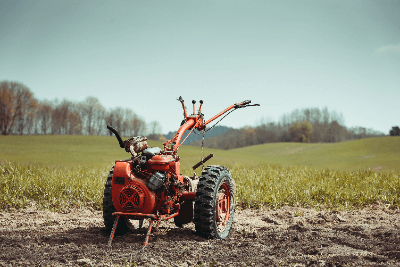What Is a Rotavator?

A rotavator, also known as a rotary tiller or cultivator, is a piece of agricultural machinery designed for soil cultivation. Its primary functions include loosening hard soil, evenly distributing fertilizers, and eliminating weeds and unwanted plants.
Rotavators are essential in preparing soil for planting by breaking up hardened ground and integrating compost and fertilizers into the soil. This process enhances soil fertility, leading to increased crop yields and healthier plants.
Uses of Rotavators
Rotavators are instrumental in improving soil conditions. They loosen compacted soil, facilitating aeration and friability, and are effective in evenly spreading nutrients throughout the soil. For best results, they should be used on dry soil, enhancing the efficiency of soil loosening and weed removal.
Features of Rotavators
Rotavators can be electric, gas, or gasoline-powered and rotate tines to aerate and cultivate the soil. They are most commonly powered by gasoline engines.
Advantages
- Loosen and aerate hardened soil.
- Control weed growth.
- Mix compost and fertilizers efficiently.
- Enhance crop productivity.
- Reduce labor requirements.
- Enable cultivation in narrow or inaccessible areas.
- Portability for easy transportation.
Disadvantages
- Engine noise and exhaust emissions.
- Regular maintenance requirements.
- Limited efficiency in large fields compared to tractors.
- Less depth of cultivation than tractors.
- Safety concerns without proper checks.
- Risk of accidents during transportation.
Types of Rotavators
Rotavators vary based on power source and rotary position.
- Axle Rotary: Small and easy to operate with good maneuverability, but prone to vibrations.
- Rear Rotary: Strong cultivating power, ideal for straight-line movement, but require careful operation.
- Front Rotary: Excellent maneuverability for corner cultivation, safer but less powerful.
How to Choose a Rotavator
When selecting a rotavator, consider horsepower, fuel type, and rotary position based on your field size and cultivation needs. Horsepower ranges from less than 3 for small gardens to over 6 for larger fields. Fuel type choices include gasoline, electric, and gas canister. The rotary position should align with the intended use and safety requirements.